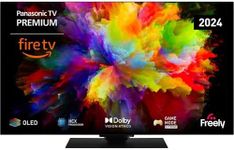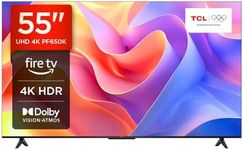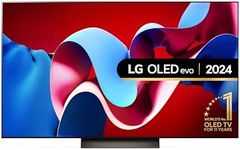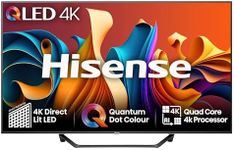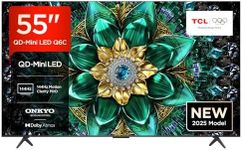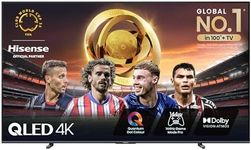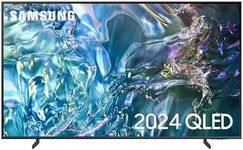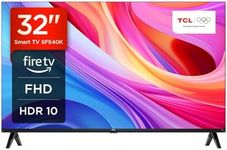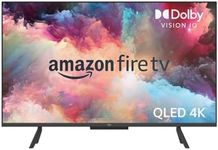Buying Guide for the Best Tvs
Choosing the right TV can greatly enhance your viewing experience, whether you're watching movies, playing video games, or just catching up on your favorite shows. To make the best choice, it's important to understand the key specifications and how they align with your needs and preferences. Here are some of the most important specs to consider when buying a TV, along with explanations to help you navigate through them.Screen SizeScreen size refers to the diagonal measurement of the TV screen, usually in inches. This spec is important because it affects how immersive your viewing experience will be. Smaller screens (32-43 inches) are suitable for bedrooms or small living rooms, medium screens (50-65 inches) are great for average-sized living rooms, and larger screens (70 inches and above) are ideal for home theaters or large spaces. Consider the size of your room and the distance from which you'll be watching the TV to pick the right screen size for you.
ResolutionResolution indicates the number of pixels that make up the picture on the screen, with higher resolutions offering more detail. Common resolutions include Full HD (1080p), 4K (2160p), and 8K (4320p). Full HD is sufficient for smaller screens and casual viewing, 4K is ideal for larger screens and provides a sharper image, and 8K is for those who want the highest level of detail and future-proofing. Choose a resolution based on your desire for picture quality and the type of content you plan to watch.
Display TechnologyDisplay technology refers to the type of screen used in the TV, such as LED, OLED, or QLED. LED TVs are generally more affordable and offer good brightness, OLED TVs provide superior contrast and color accuracy with perfect blacks, and QLED TVs offer bright and vibrant colors with good energy efficiency. Your choice should depend on your preference for picture quality, viewing environment, and budget.
Refresh RateRefresh rate is the number of times the TV updates the image on the screen per second, measured in Hertz (Hz). Common refresh rates are 60Hz, 120Hz, and 240Hz. A higher refresh rate results in smoother motion, which is important for fast-paced content like sports and action movies. If you watch a lot of such content or play video games, a higher refresh rate (120Hz or above) is recommended. For regular TV watching, 60Hz is usually sufficient.
Smart TV FeaturesSmart TV features refer to the built-in internet connectivity and apps that allow you to stream content, browse the web, and use various applications. This spec is important for accessing streaming services like Netflix, Hulu, and YouTube directly from your TV. Look for a TV with a user-friendly interface and the apps you use most frequently. If you enjoy streaming content and want a seamless experience, prioritize smart TV features.
HDR (High Dynamic Range)HDR enhances the contrast and color range of the TV, making the picture more realistic and vibrant. There are different HDR formats like HDR10, Dolby Vision, and HLG. HDR10 is the most common and provides a good improvement in picture quality, while Dolby Vision offers dynamic metadata for an even better experience. If you want the best possible picture quality and watch a lot of HDR content, look for a TV that supports multiple HDR formats.
ConnectivityConnectivity refers to the ports and wireless options available on the TV, such as HDMI, USB, Bluetooth, and Wi-Fi. This spec is important for connecting external devices like gaming consoles, soundbars, and streaming devices. Ensure the TV has enough HDMI ports for your needs, and consider additional features like Bluetooth for wireless audio and Wi-Fi for internet connectivity. Choose a TV with the right connectivity options based on the devices you plan to use with it.
Audio QualityAudio quality refers to the sound performance of the TV's built-in speakers. While most modern TVs have decent audio, they often lack the depth and clarity of external sound systems. Look for TVs with enhanced audio features like Dolby Atmos or DTS:X if you want better sound without additional speakers. If audio quality is a priority, consider investing in a soundbar or home theater system to complement your TV.

